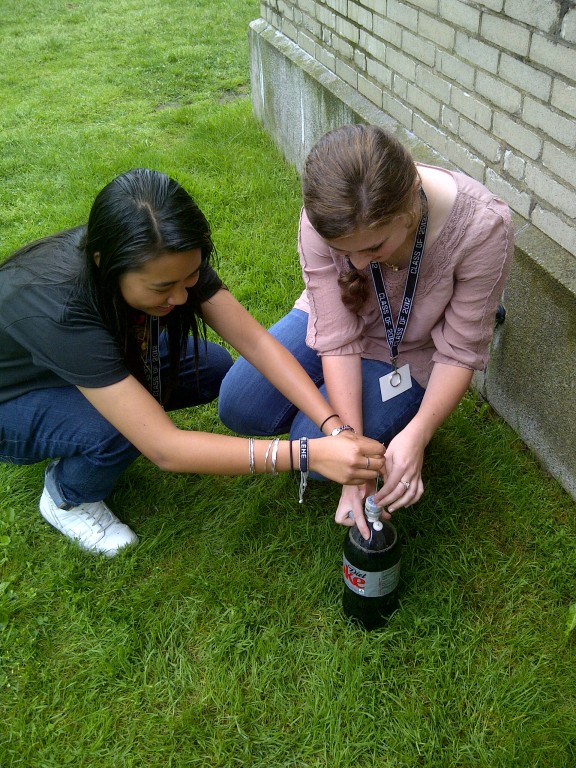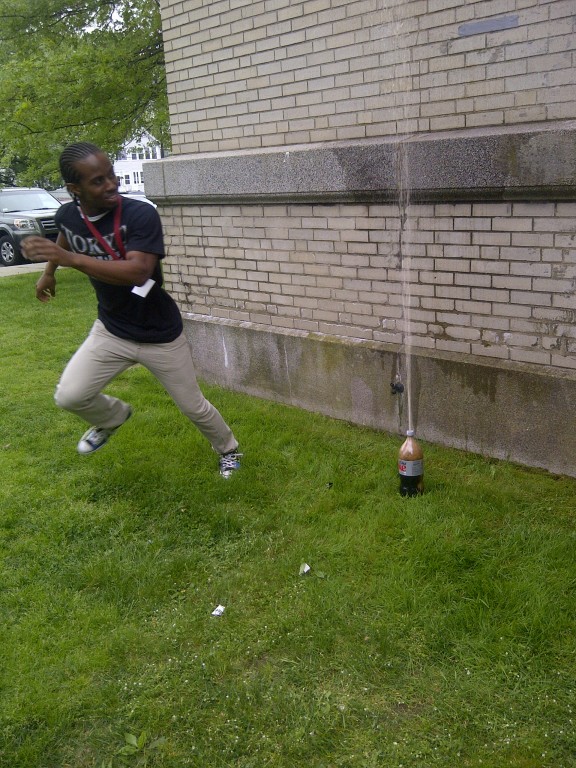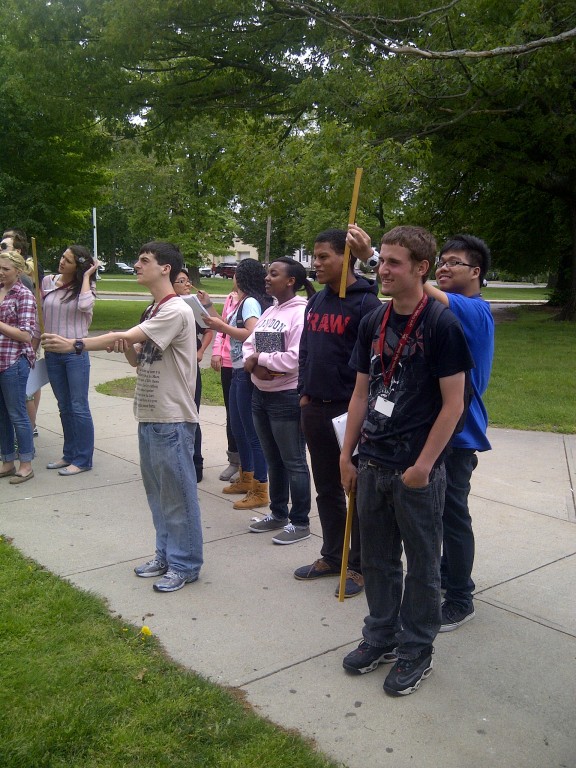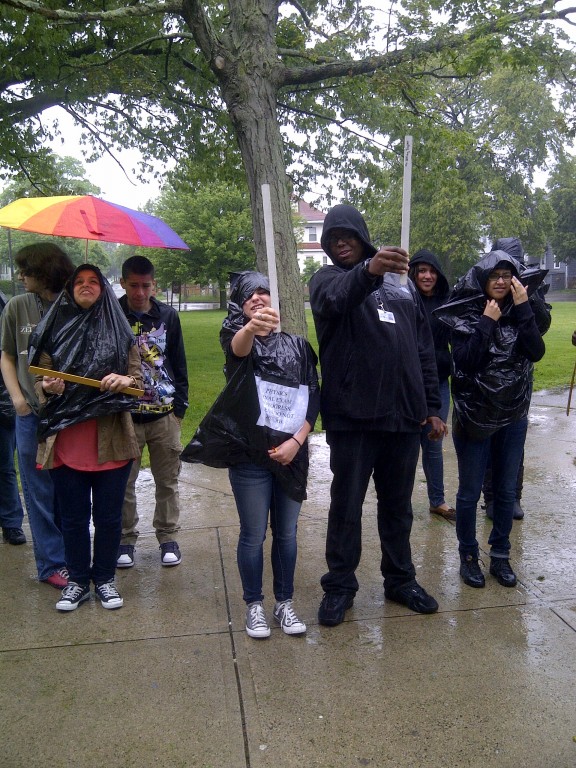I gave a chemistry final exam involving Diet CokeTM & MentosTM back in 2006. I’ve done it as a lab experiment a couple of times since then, but not as a final—until this year, when I did a physics version.
The experiment was inspired by this video, which went viral in 2006. The 2005-06 school year, my third year of teaching (excluding a half-year of substitute teaching), was when I found my classroom persona. It would take reading much of this blog site to get a detailed picture of that persona, but the essentials are that I make the science interesting and relevant, teach in plain English, get the students asking questions, doing things, and working together, and I give them as much flexibility as I can, and as many chances as they need (limited only by our schedules and the school’s academic calendar) to be successful.
Relating the fountain to physics is less of a stretch than with chemistry. The class was divided into groups. Each group was given a bottle cap with a hole drilled into it; each cap had a different size opening. Groups were to build their fountains using a two-liter bottle of Diet Coke and 5 Mentos mints, with a hole drilled through each mint. (We pretty much followed the DIY instructions from the EepyBird site. I found that a Dremel tool works much better than an electric drill for boring the holes in the Mentos.)
Once the Mentos were strung, groups took turns setting up their fountains next to the school building.
Once each fountain was assembled, one student would give a countdown, release the string, and run away:
A minimum of two students from each group had the responsibility of measuring the height of the spray, using a ruler as a scale hypsometer and a 2m reference mark (a piece of duct tape on the side of the building).
Not surprisingly, this was every student’s favorite final exam. It was raining on the day that some of my classes were scheduled to do the experiment. I gave each class the option of postponing for a day, but every one of them voted overwhelmingly to do the experiment as scheduled and not wait.
After taking measurements, students pooled data from the entire class. Each student had to individually calculate the pressure in each fountain (using P = ρgh and assuming that the density of Diet Coke is the same as that of water), plot a graph of pressure vs. the diameter of the opening, draw a best-fit line, and extrapolate to an opening of zero to find the pressure inside a 2L-bottle of Diet Coke with 5 Mentos and no hole in the cap.
The data were not as conclusive as I had hoped. I taught my honors students the use of error bars to help them decide where to draw their best-fit line. One class had a definite trend and calculated the theoretical pressure inside a sealed 2L bottle of Diet Coke with 5 Mentos to be around 95,000 Pa above ambient.
As I grade the exams, I’m finding that the write-ups look good, showing that the vast majority of my students understood what they were trying to do, how they were going about doing it, how well it turned out, and what it did or didn’t show. This is the essence of any science course. Plus, they have the bragging rights and a great conversation starter when they get to college.





AWESOME. What a good idea!
Why can’t *I* have finals like that…? I really need to go back to high school and forget all this higher education stuff!
Love it, this is how science *should* be taught!
Hands on, open ended, collaborative and inquiry based!